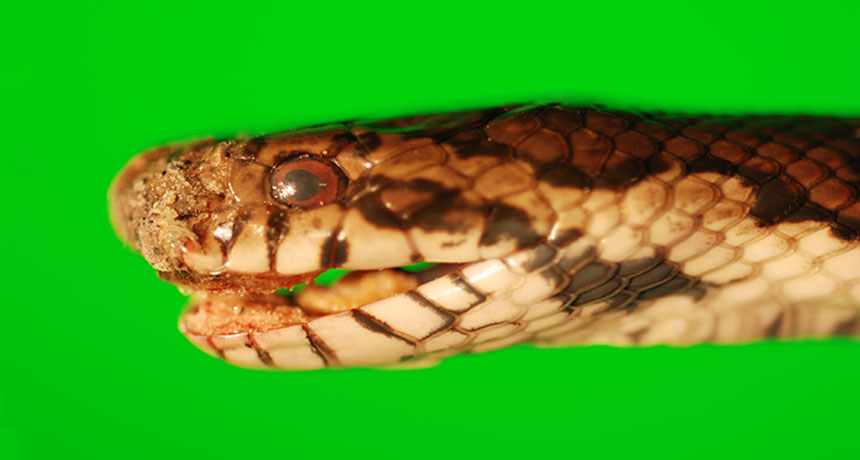
A deadly fungus is infecting snake species seemingly at random
It doesn’t matter if it’s a burly rattler or a tiny garter snake. A deadly fungal disease that’s infecting snakes in the eastern and midwestern United States doesn’t appear to discriminate by species, size or habitat, researchers report online December 20 in Science Advances.
The infection, caused by the fungal pathogen Ophidiomyces ophiodiicola, can cover snakes’ bodies with lesions that make it hard for the reptiles to do normal snake things like slither and eat. Many eventually die from the infection. Fungal spores hang around in the soil and can spread to snakes that pick the particles up (SN Online: 3/15/16). The disease has been likened to the chytrid fungus that’s wiping out amphibian populations worldwide, or the white-nose syndrome that’s killing off entire caves of bats (SN: 4/30/16, p. 20).
In snakes, the disease not only “could result in the downfall of vulnerable species, but could also impact whole communities,” says Bruce Kingsbury, a biologist at Indiana University–Purdue University Fort Wayne, who was not part of the study. Snakes are important predators in many ecosystems — if the reptiles go, then populations of small mammals that they help control could boom, throwing the ecosystem out of whack.
Snake fungal disease first gained widespread attention around 2008. It has now been documented in 23 species in the eastern and midwestern United States, says study coauthor Frank Burbrink, a herpetologist at the American Museum of Natural History in New York City. He and his colleagues wanted to see whether certain risk factors might make these species more susceptible to the disease than the dozens of other types of snakes that live in the region.
Burbrink and his team hunted for patterns in the data on sick snakes — to see whether the infected species were related evolutionarily, for example, or whether they shared certain behavioral traits or habitat preferences. But the fungus appeared to be infecting species at random, the researchers found. It didn’t seem to matter whether a snake was big or small, whether it lived primarily in water or burrowed on land, or whether it laid many eggs or just a few.
“It’s about as bad as you can get,” Burbrink says. “It seems like any snake could be a candidate.”
There are still many questions about the disease. For one, scientists don’t know how prevalent it actually is. Even in areas where the fungus is known to be present, many cases of sick snakes probably go unreported. And while the specific fungus that causes the infection was identified only a few years ago, it’s not clear how long the disease has been around, Burbrink says. He hopes that studying animals housed in natural history museum collections might help answer that question.